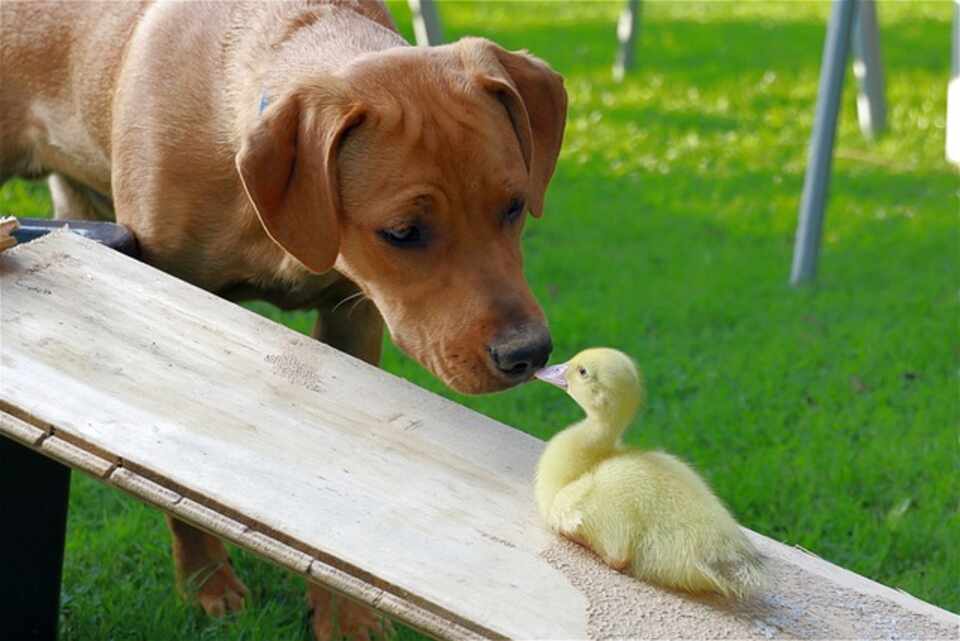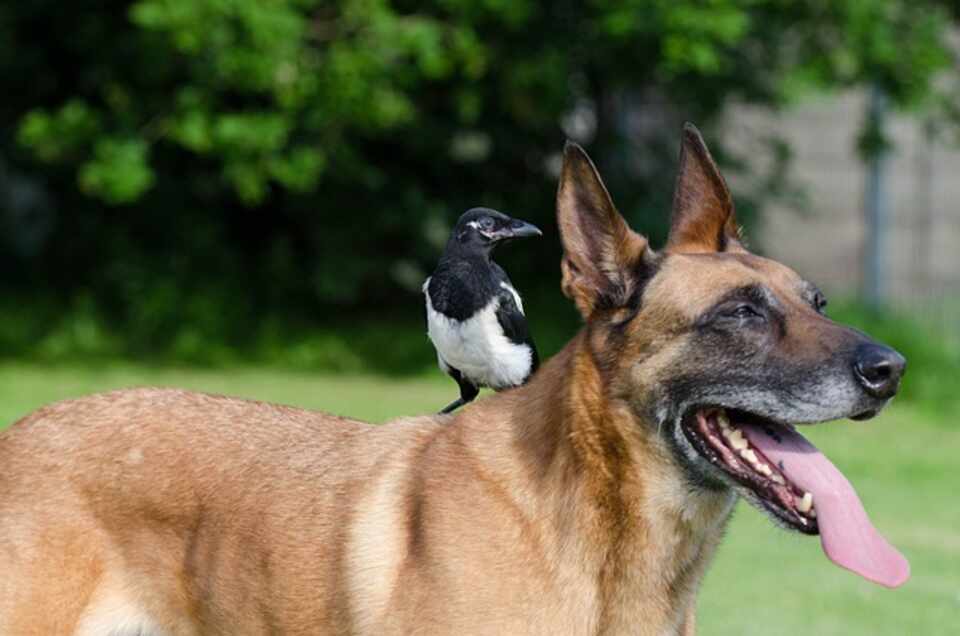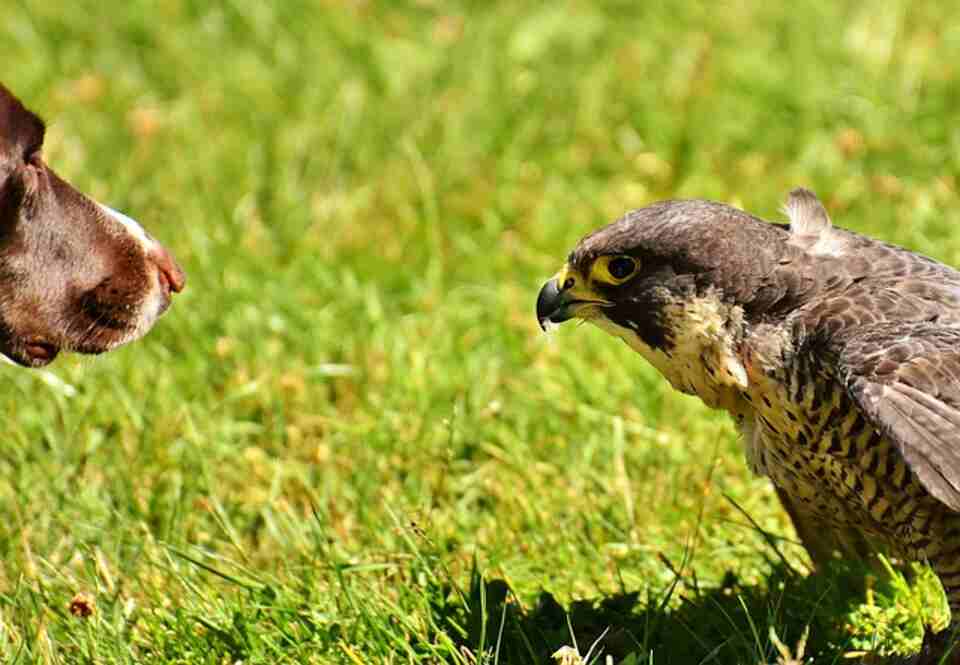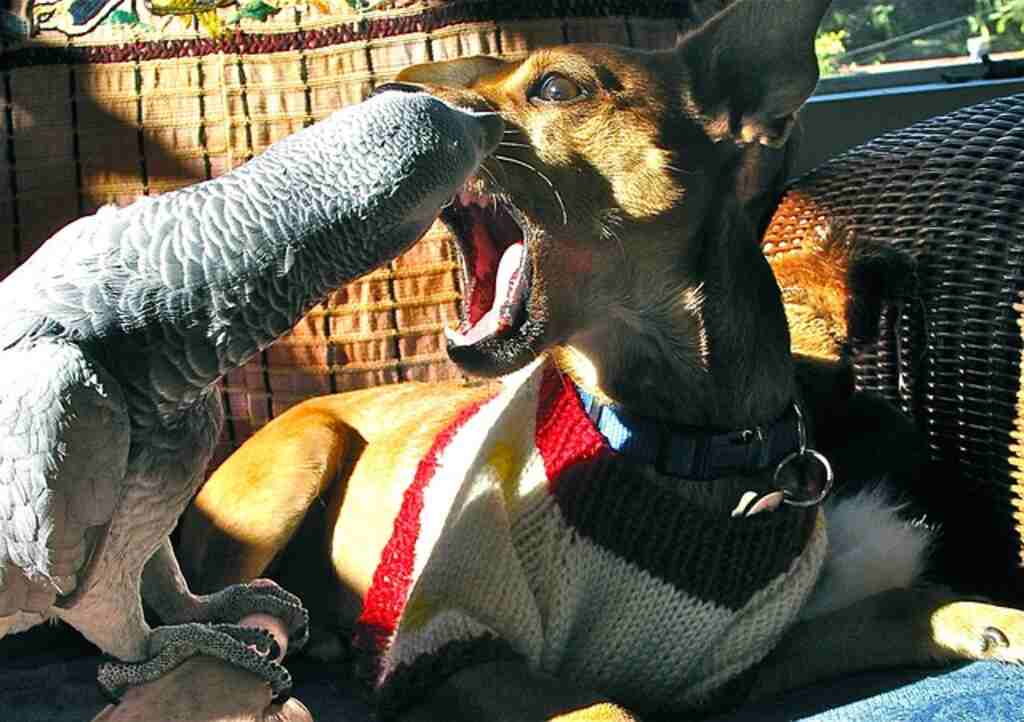When it comes to intelligence, we often think of dogs as the champions of cognitive abilities. Their trainability and interactive nature make them seem exceptionally smart. But have you ever wondered if birds could match or even surpass dogs in terms of intelligence?
In this article, we will delve into the fascinating world of avian and canine intelligence. We will explore the unique cognitive abilities displayed by birds and dogs, shedding light on their behavior and problem-solving skills.
So, let’s dive in and uncover the truth about bird intelligence versus dog intelligence.
Table of Contents
- 1 Key Takeaways:
- 2 Are Birds Smarter Than Dogs?
- 3 Understanding Animal Intelligence
- 4 The Cognitive Abilities of Dogs
- 5 The Cognitive Abilities of Birds
- 6 Comparing Intelligence Between Dogs and Birds
- 7 How Do Environmental Factors Play a Role in the Development of Intelligence in Birds and Dogs?
- 8 Are There Specific Breeds of Dogs or Species of Birds Considered Smarter Than Others?
- 9 How Has the Domestication of Dogs Impacted Their Cognitive Abilities Compared to Wild Canines?
- 10 How Do Social Structures and Behaviors Influence the Intelligence and Problem-Solving Skills of Birds and Dogs?
- 11 Are There Any Notable Examples of Exceptional Intelligence or Unique Cognitive Abilities Displayed by Individual Birds or Dogs?
- 12 Conclusion
- 13 FAQs
- 13.1 What are the cognitive abilities of dogs?
- 13.2 What are the cognitive abilities of birds?
- 13.3 Can specific breeds of dogs or species of birds be considered smarter than others?
- 13.4 How have environmental factors influenced the development of intelligence in birds and dogs?
- 13.5 How has the domestication of dogs impacted their cognitive abilities compared to wild canines?
- 13.6 How do the social structures and behaviors of birds and dogs influence their intelligence and problem-solving skills?
- 13.7 Are there any notable examples of exceptional intelligence or unique cognitive abilities displayed by individual birds or dogs?
- 14 Source Links
- 15 Author
Key Takeaways:
- Both birds and dogs possess unique forms of intelligence and cognitive abilities.
- Birds, such as crows and parrots, display impressive problem-solving skills and communication abilities.
- Dogs excel in problem-solving skills, communication abilities, and social intelligence.
- The comparison of intelligence between birds and dogs is challenging due to their different cognitive strengths.
- Environmental factors play a role in nurturing the development of intelligence in birds and dogs.

Are Birds Smarter Than Dogs?
Birds and dogs exhibit intelligence in different ways, making it challenging to determine which species is overall smarter. Birds like parrots have shown high levels of intelligence, while dogs are known for their loyalty and ability to understand human emotions. Intelligence can vary within breeds and species, and it is not directly comparable.
Understanding Animal Intelligence
When we talk about animal intelligence, it’s important to move beyond our human-centric perspectives and appreciate the diverse range of cognitive abilities exhibited by different species. Animal intelligence encompasses more than just problem-solving skills; it includes empathy, interspecies learning, communication, and various forms of behavioral intelligence.
Both birds and dogs display their own unique forms of intelligence. Bird behavioral intelligence, for instance, is evident in their impressive problem-solving skills and communication abilities. Birds like crows and parrots can use tools, remember locations, and even mimic human speech patterns.
Dogs, on the other hand, exhibit cognitive abilities that are highly attuned to their social nature. Their problem-solving skills, communication abilities, and social intelligence enable them to understand up to 250 words, interpret human emotions, and form strong bonds with both humans and other animals.
By appreciating the cognitive abilities of birds and dogs, we gain a deeper understanding of the vast and intriguing world of animal intelligence. Let’s explore further to uncover more insights about the intricate cognitive lives of these fascinating creatures.
The Cognitive Abilities of Birds and Dogs
To gain a clearer understanding of animal intelligence, it’s essential to explore into the specific cognitive abilities exhibited by birds and dogs. Here’s a comparison of their behavioral intelligence:
| Birds | Dogs | |
|---|---|---|
| Problem-Solving Skills | Impressive problem-solving skills, tool usage, memory recall | Excellent problem-solving skills, ability to understand complex commands |
| Communication Abilities | Effective communication through vocalizations and mimicry | Ability to understand and respond to human cues and emotions |
| Social Intelligence | Varied forms of social intelligence within different species | Strong social skills, ability to form bonds with humans and other animals |
As we can see, both birds and dogs possess remarkable cognitive abilities that enable them to navigate and thrive in their respective environments. By understanding these unique qualities, we can better appreciate the complex and fascinating world of animal intelligence.
The Cognitive Abilities of Dogs
When it comes to cognitive abilities, dogs have some impressive skills that showcase their intelligence. From problem-solving to communication, dogs exhibit a range of cognitive abilities that contribute to their unique relationship with humans and other animals.
Dogs are known for their problem-solving skills. They have the ability to learn and understand complex tasks, making them highly trainable. Whether it’s figuring out how to open a latch or finding hidden treats, dogs can demonstrate impressive problem-solving abilities that highlight their cognitive prowess.
Communication is another area in which dogs excel. They have a keen sense of understanding human gestures, facial expressions, and vocal cues. This ability to interpret human communication allows dogs to form strong bonds with their human counterparts and navigate their environment effectively.
Overall, the cognitive abilities of dogs encompass problem-solving skills and communication abilities that contribute to their intelligence. These skills allow dogs to navigate their world and understand their human companions, cementing their status as one of the most beloved and intelligent animal species.
Table: A Comparison of Cognitive Abilities in Dogs
| Cognitive Ability | Description |
|---|---|
| Problem-Solving | Dogs have the ability to learn and understand complex tasks, showcasing their problem-solving skills. |
| Communication | Dogs can interpret human gestures, facial expressions, and vocal cues, making them excellent communicators. |
| Social Intelligence | Dogs have a natural ability to form strong bonds with humans and other animals, demonstrating their social intelligence. |
The Cognitive Abilities of Birds
Parrots, on the other hand, are renowned for their communication abilities. These intelligent birds have the capacity to mimic human speech patterns and learn a large vocabulary of words and phrases. Some parrots even demonstrate an understanding of context and can use words appropriately in a given situation.
Cognitive Abilities of Birds:
- Advanced problem-solving skills
- Tool usage
- Intelligent communication
- Mimicking human speech patterns

| Cognitive Abilities | Birds | Dogs |
|---|---|---|
| Problem-solving skills | Advanced | High |
| Tool usage | Demonstrated | Limited |
| Intelligent communication | Yes | Yes |
| Mimicking human speech patterns | Yes | No |
While both birds and dogs possess cognitive abilities, birds, particularly crows and parrots, exhibit a unique set of skills that showcase their intelligence.
From using tools to communicate with humans in their own language, these avian creatures continue to captivate researchers and enthusiasts alike with their impressive cognitive prowess.
Comparing Intelligence Between Dogs and Birds
When it comes to comparing the intelligence of dogs and birds, it’s not as straightforward as labeling one species as smarter than the other.
Both dogs and birds display unique cognitive abilities and problem-solving skills that are specific to their evolutionary adaptations and behaviors.
Let’s delve into some key aspects of their intelligence to understand the subtle nuances.
Dog Intelligence
Dogs have long been recognized for their social intelligence and ability to communicate and bond with humans. They possess an impressive capacity to understand human emotions and can even interpret up to 250 words.
Their problem-solving skills are evident in their ability to learn and follow commands, navigate complex environments, and even assist in various tasks such as search and rescue operations. Dogs’ cognitive abilities thrive on their ability to form strong social bonds and work cooperatively with humans.
Bird Intelligence
Birds, particularly species like crows and parrots, showcase remarkable problem-solving skills and communication abilities. Their cognitive prowess is evident in their ability to use tools, mimic human speech patterns, and even remember specitfic locations.
Birds have adapted to various environmental challenges and utilize their intelligence to survive and thrive in their specific habitats. Their ability to learn and mimic complex behaviors is a testament to their cognitive abilities.
A Comparative Perspective
While dogs excel in social intelligence and problem-solving within their human-led environments, birds exhibit unique cognitive abilities that are tailored to their ecological niches.
Comparing their intelligence is like comparing apples to oranges – both are intelligent in their own right, but their skills are shaped by different needs and evolutionary paths.
Rather than focusing on who is smarter, it’s more fascinating to explore the diverse range of cognitive abilities displayed by both dogs and birds.
| Dogs | Birds | |
|---|---|---|
| Social Intelligence | High | Varies |
| Problem-Solving | Strong | Impressive |
| Communication | Human-focused | Diverse and complex |
| Learning Capacity | Training-oriented | Adaptability and innovation |
As the table above demonstrates, dogs and birds possess different strengths in terms of social intelligence, problem-solving, communication, and learning capacity. These characteristics are a reflection of their unique evolutionary adaptations and survival strategies.
In the end, it’s not about determining which species is smarter, but appreciating the astonishing cognitive abilities that both dogs and birds bring to the natural world.
How Do Environmental Factors Play a Role in the Development of Intelligence in Birds and Dogs?
Environmental factors play a crucial role in shaping the development of intelligence in both birds and dogs. The surroundings in which these animals grow and interact significantly impact their cognitive abilities and problem-solving skills. Let’s explore how various environmental factors influence bird intelligence and dog intelligence.
Exposure to Stimuli
Birds and dogs exposed to a diverse range of stimuli tend to develop enhanced cognitive abilities. For birds, living in complex environments with rich sensory inputs, such as forests with abundant foliage and diverse prey, can stimulate their problem-solving skills.
Similarly, dogs raised in environments that offer plenty of mental and physical stimulation, like interactive toys and regular training sessions, are more likely to exhibit heightened intelligence.
Social Structures and Interaction
The social structures and interactions within bird and dog communities also have a profound impact on their intelligence development. Birds that engage in cooperative breeding and have complex social hierarchies tend to exhibit advanced problem-solving abilities.
On the other hand, dogs that have regular positive social interactions with humans and other dogs tend to have greater cognitive flexibility and adaptability, making them more intelligent in navigating diverse situations.
| Environmental Factors | Bird Intelligence | Dog Intelligence |
|---|---|---|
| Exposure to Stimuli | Stimulated by rich sensory inputs in complex environments | Heightened intelligence when raised in stimulating environments |
| Social Structures and Interaction | Cooperative breeding and complex social hierarchies promote advanced problem-solving abilities | Regular positive social interactions enhance cognitive flexibility and adaptability |
Enrichment Opportunities
Providing enrichment opportunities is essential for fostering intelligence in both birds and dogs. Birds benefit from enrichment activities like puzzle feeders, foraging challenges, and varied environmental setups. These activities engage their problem-solving skills and mimic natural foraging behaviors.
In conclusion, the development of intelligence in birds and dogs is heavily influenced by environmental factors, including exposure to stimuli, social structures, and enrichment opportunities.
Understanding and providing a conducive environment for these animals can maximize their cognitive potential and support their overall well-being.

Both animals should be set against a backdrop of natural elements, such as trees, rocks, and grassland, to emphasize their environmental influence on their respective intelligence levels.
Note: The table above showcases key environmental factors that contribute to bird intelligence and dog intelligence.
Are There Specific Breeds of Dogs or Species of Birds Considered Smarter Than Others?
When it comes to intelligence, it’s natural to wonder if certain breeds of dogs or species of birds are considered smarter than others. However, the concept of intelligence in animals is complex and multifaceted, making it challenging to make definitive conclusions.
For dogs, intelligence can vary not only between breeds but also within them. Certain dog breeds, such as Border Collies and Poodles, are often regarded as highly intelligent due to their trainability and problem-solving abilities. However, this doesn’t mean that other breeds are less intelligent. Each breed has its own unique strengths and characteristics that contribute to their overall intelligence.
Similarly, in the avian world, specific species like crows and parrots are known for their remarkable cognitive abilities. These birds demonstrate problem-solving skills, tool usage, and even the ability to mimic human speech. However, intelligence can also be found in other bird species, each with their own set of skills and adaptations that contribute to their overall intelligence.
| Dog Breeds | Notable Characteristics |
|---|---|
| Border Collie | Highly trainable, excellent problem-solving skills |
| Poodle | Intelligent, versatile, quick learners |
| German Shepherd | Loyal, trainable, good at tasks requiring focus |
| Bird Species | Notable Characteristics |
|---|---|
| Crows | Excellent problem-solving skills, tool usage |
| Parrots | Can mimic human speech, exhibit problem-solving abilities |
| Hummingbirds | Exceptional memory, agility, and navigation skills |
In summary, while some dog breeds and bird species may showcase certain cognitive abilities more prominently, it is essential to acknowledge that intelligence is diverse and cannot be generalized to favor specific breeds or species. Each animal brings its own unique set of skills and adaptations, making them intelligent in their own way.
How Has the Domestication of Dogs Impacted Their Cognitive Abilities Compared to Wild Canines?
The domestication of dogs has had a significant impact on their cognitive abilities compared to their wild counterparts. Over thousands of years, humans have selectively bred dogs for various traits, resulting in significant changes in their behavior, social intelligence, and problem-solving skills.
Furthermore, domestication has also influenced the problem-solving abilities of dogs. Wild canines primarily rely on their instincts and natural hunting skills to survive. However, domesticated dogs have adapted to solve complex problems in their human-centered environments. Their cognitive abilities have been shaped by regular interactions with humans, exposure to various stimuli, and training.
| Comparison of Cognitive Abilities | Wild Canines | Domesticated Dogs |
|---|---|---|
| Social Intelligence | Primarily focused on survival in their natural habitats. | Developed strong bonds with humans and can interpret human cues. |
| Problem-Solving | Reliant on natural hunting instincts and basic problem-solving skills. | Adapted to solve complex problems in human-centered environments. |
| Communication | Relatively limited forms of communication for survival purposes. | Can understand and respond to human language and gestures. |
In conclusion, the domestication of dogs has had a profound impact on their cognitive abilities compared to wild canines. Through selective breeding, dogs have developed enhanced social intelligence, problem-solving skills, and the ability to understand human cues.
These cognitive adaptations have made dogs highly proficient in human-centered environments, allowing them to form close bonds with humans and adapt to complex problem-solving situations.
How Do Social Structures and Behaviors Influence the Intelligence and Problem-Solving Skills of Birds and Dogs?
Social structures and behaviors play a crucial role in shaping the intelligence and problem-solving skills of both birds and dogs. These factors contribute to the cognitive development and adaptive abilities displayed by these animals.
Bird Intelligence and Problem-Solving Skills
Birds, such as crows and parrots, exhibit remarkable intelligence and problem-solving skills rooted in their social behaviors. Cooperative breeding behavior, where individuals work together to care for young birds, showcases their ability to cooperate and strategize.
Additionally, birds’ flocking behavior fosters social learning and the exchange of information, allowing them to learn from one another and adapt to new situations.
Dog Intelligence and Problem-Solving Skills
Dogs, on the other hand, possess a unique set of social behaviors that enhance their intelligence and problem-solving skills. Their ability to observe and learn from humans has been instrumental in their domestication.
Dogs can understand human cues and gestures, making them highly responsive to training and communication. Their social nature enables them to form strong bonds with humans, leading to increased cooperation and problem-solving abilities.
| Social Structures | Behaviors | Intelligence and Problem-Solving Skills |
|---|---|---|
| Birds | Cooperative breeding, flocking behavior | Ability to strategize and learn from one another |
| Dogs | Observation of humans, social bonding | Responsive to training, communication, and cooperation |
Impact on Cognitive Abilities
The social structures and behaviors of both birds and dogs have a profound impact on their cognitive abilities. By interacting with their own species and humans, they acquire knowledge, learn problem-solving techniques, and refine their understanding of the world.
This social stimulation promotes the development of higher cognitive functions, fostering adaptive behaviors and enhancing their problem-solving skills.
In conclusion, the social structures and behaviors of birds and dogs significantly influence their intelligence and problem-solving skills.
Whether it’s the cooperative breeding behavior of birds or the social bonding and observation abilities of dogs, these animals demonstrate remarkable cognitive abilities shaped by their interactions with their environments and each other.

Are There Any Notable Examples of Exceptional Intelligence or Unique Cognitive Abilities Displayed by Individual Birds or Dogs?
Within the world of animal intelligence, there are countless examples of exceptional abilities displayed by individual birds and dogs. These remarkable creatures showcase their unique cognitive prowess in various ways, leaving us in awe of their capabilities.
Exceptional Bird Intelligence
One remarkable example of exceptional bird intelligence is Alex, the African Grey parrot. Alex possessed an astonishing vocabulary of over 100 words and demonstrated the ability to understand and use concepts such as color, shape, and number. His exceptional language skills and problem-solving abilities showcased just how intelligent birds can be.
Another exceptional bird is the New Caledonian crow, which has been observed using tools to obtain food. These birds exhibit remarkable creativity and problem-solving skills as they fashion tools from twigs and other objects in their environment. This remarkable behavior highlights the cognitive abilities birds possess.
Unique Cognitive Abilities in Dogs
| Bird Examples | Dog Examples |
|---|---|
| Alex the African Grey parrot | Chaser the Border Collie |
| New Caledonian crow | Rico the Border Collie |
These examples are just a small glimpse into the exceptional intelligence and unique cognitive abilities displayed by individual birds and dogs. They remind us that animals are capable of remarkable feats of intellect and offer a window into the diverse and fascinating world of animal cognition.
Conclusion
Are birds smarter than dogs? This question has sparked a long-standing and fascinating debate about avian vs canine intelligence. However, it’s important to note that comparing bird intelligence to dog intelligence isn’t a clear-cut task. Birds and dogs possess unique cognitive abilities that make them intelligent in their own ways.
While dogs excel in problem-solving skills, communication abilities, and social intelligence, birds, such as crows and parrots, display impressive problem-solving skills and communication abilities. They can use tools, remember locations, and even mimic human speech patterns. Both species exhibit remarkable cognitive strengths and problem-solving abilities.
The concept of intelligence in animals goes beyond a simple comparison of brain size or learning capabilities. It includes a wide range of factors such as social structures, behaviors, and environmental influences. Factors like social dynamics and environmental stimuli play a crucial role in nurturing cognitive abilities in both birds and dogs.
The Bird Brain vs Dog Brain Debate
The avian vs canine intelligence debate is an ongoing dialogue among scientists and researchers. It’s important to approach this debate with an understanding that intelligence is a multifaceted concept and cannot be measured solely on human-centric parameters.
- In terms of problem-solving abilities, birds have been observed using tools and demonstrating advanced problem-solving skills.
- On the other hand, dogs showcase exceptional social intelligence, with the ability to understand human emotions and interpret cues.
Ultimately, the answer to whether birds are smarter than dogs or vice versa remains elusive. Both birds and dogs have their own unique cognitive abilities that make them intelligent in their respective ecosystems. It’s a testament to the diverse and remarkable array of intelligence found within the animal kingdom.
FAQs
What are the cognitive abilities of dogs?
Dogs excel in problem-solving skills, communication abilities, and social intelligence. They can understand up to 250 words, interpret human emotions, and form strong bonds with humans and other animals.
What are the cognitive abilities of birds?
Birds, such as crows and parrots, display impressive problem-solving skills and communication abilities. They can use tools, remember locations, and mimic human speech patterns.
Can specific breeds of dogs or species of birds be considered smarter than others?
There is no definitive answer on whether specific breeds of dogs or species of birds are universally considered smarter. Intelligence can vary within breeds and species.
How have environmental factors influenced the development of intelligence in birds and dogs?
Environmental factors, such as social structures, stimuli, and enrichment, play a role in nurturing cognitive abilities in both birds and dogs.
How has the domestication of dogs impacted their cognitive abilities compared to wild canines?
The domestication of dogs has allowed for the development of traits that enhance their social intelligence and ability to understand human cues.
The social structures and behaviors of both birds and dogs can influence their intelligence and problem-solving skills. Cooperative breeding behavior in birds and the ability of dogs to think for themselves are examples of how social dynamics impact cognitive abilities.
Are there any notable examples of exceptional intelligence or unique cognitive abilities displayed by individual birds or dogs?
There are many examples of individual birds and dogs displaying exceptional intelligence or unique cognitive abilities within their species. Examples include Alex, the African Grey parrot, and Chaser, the Border Collie.



